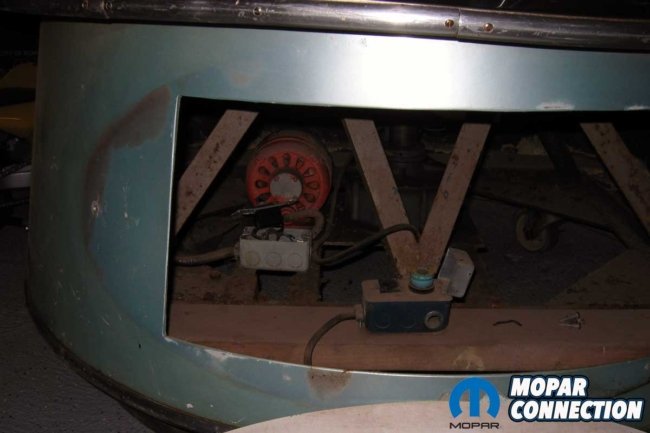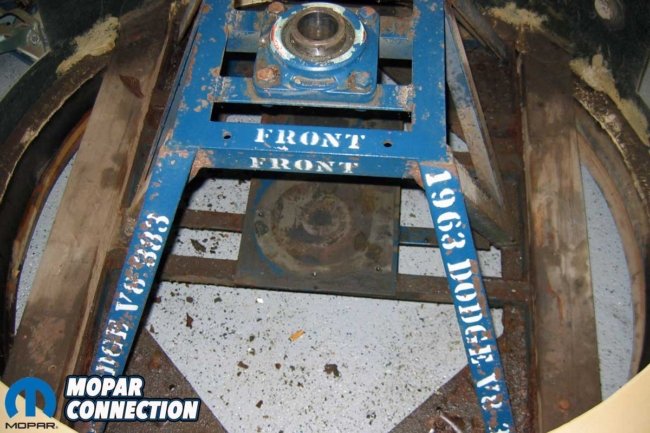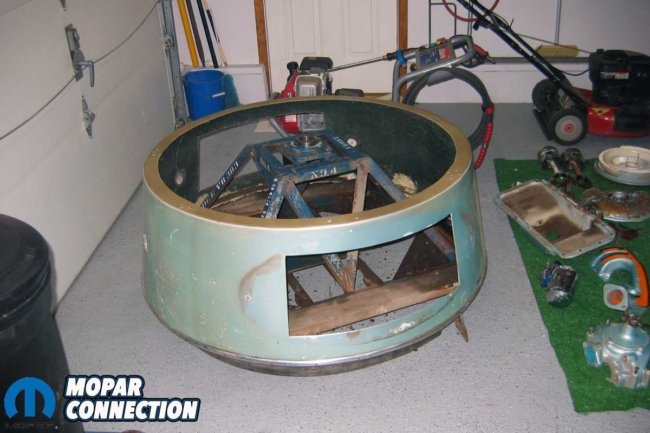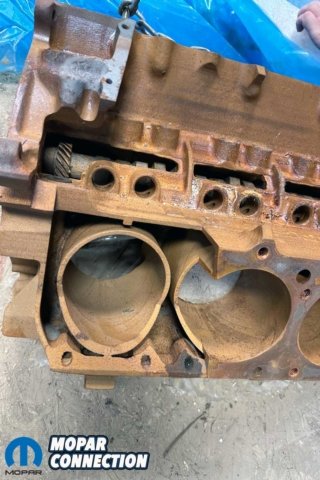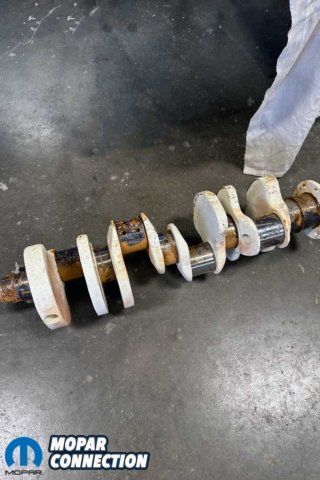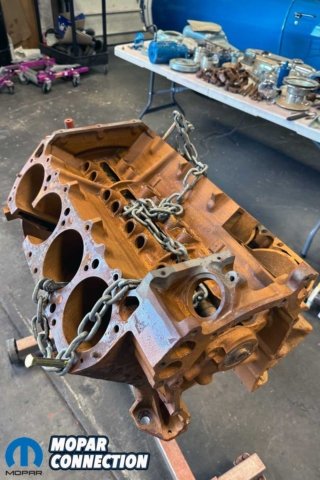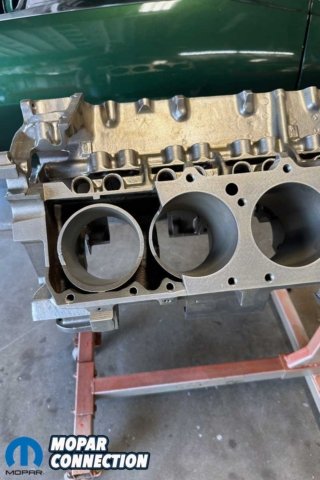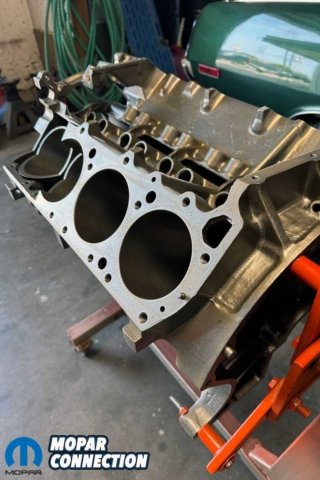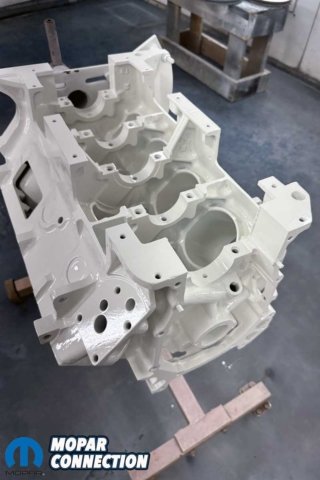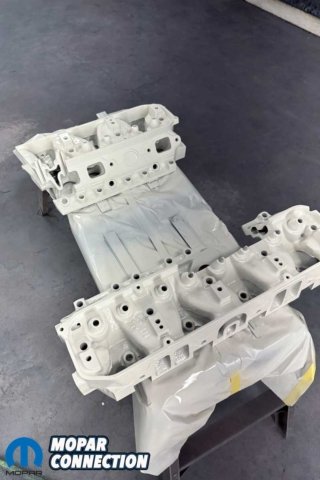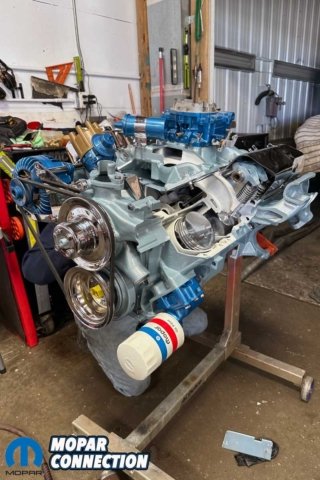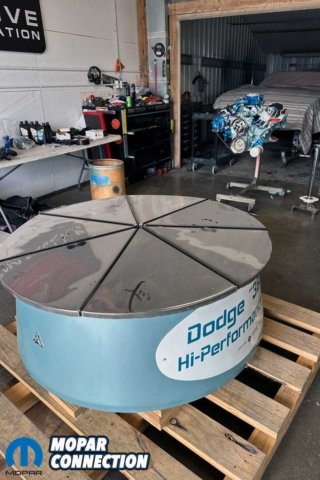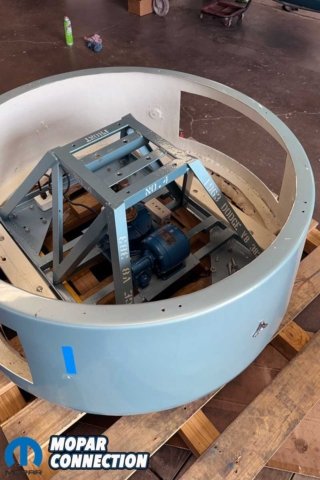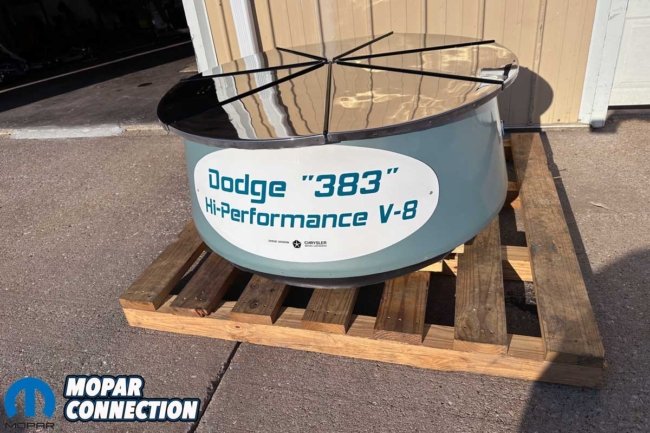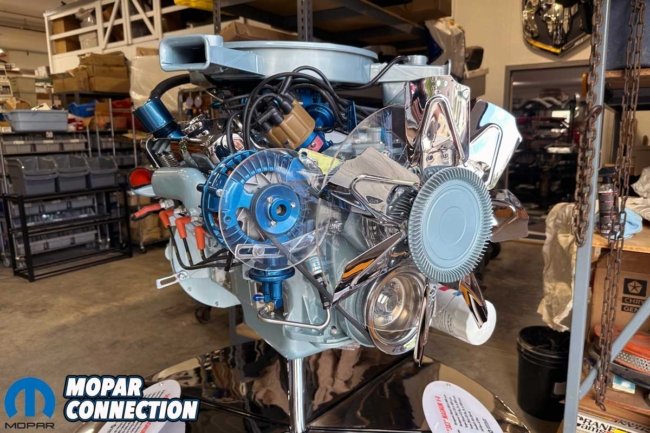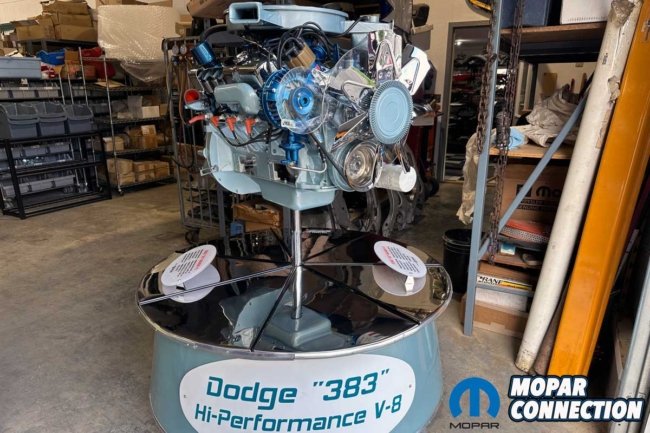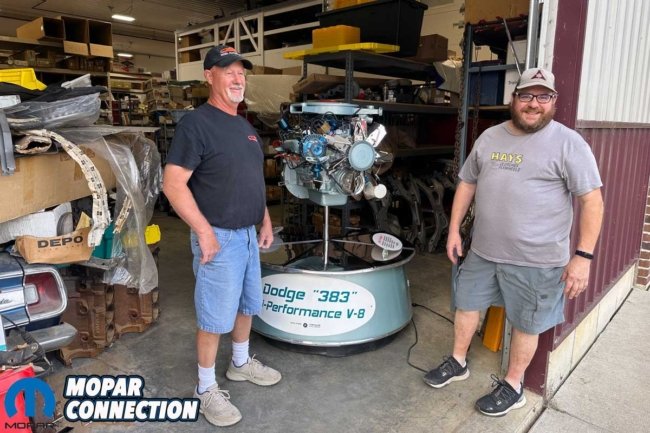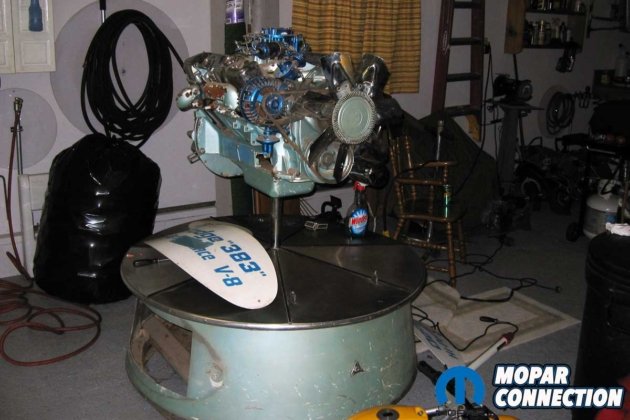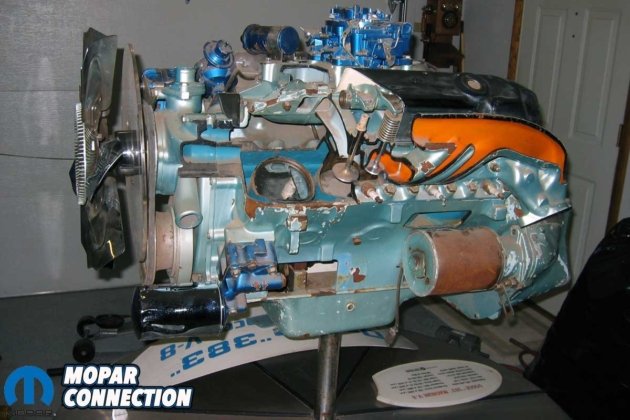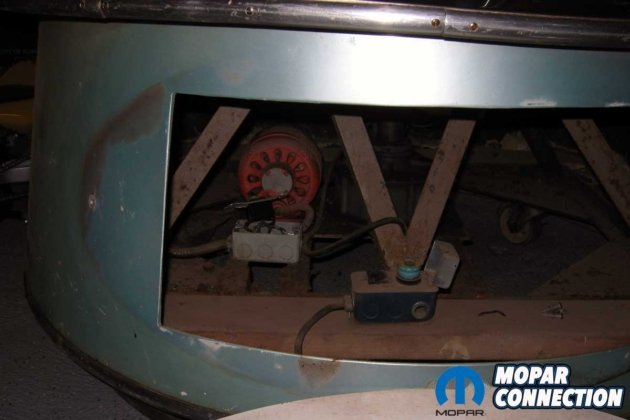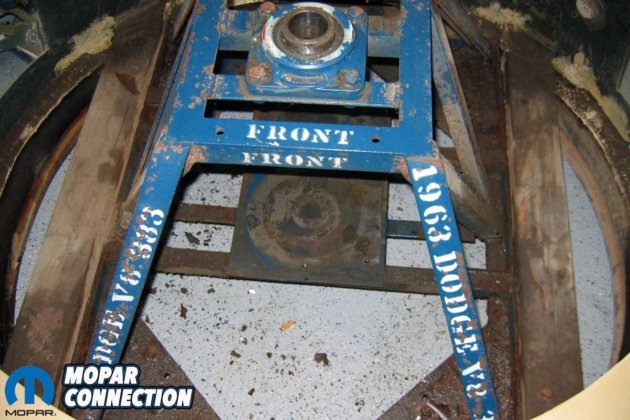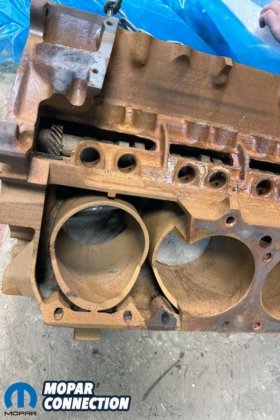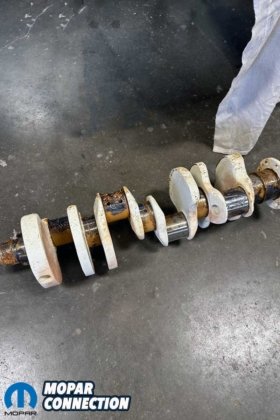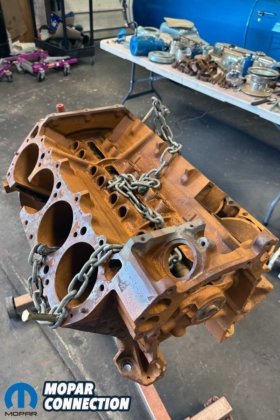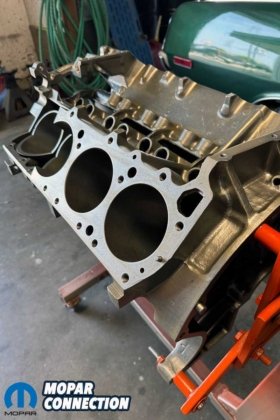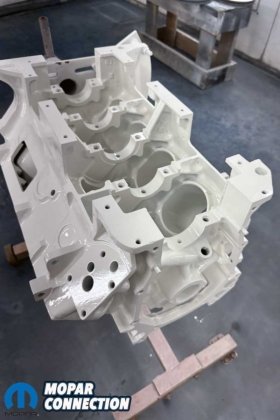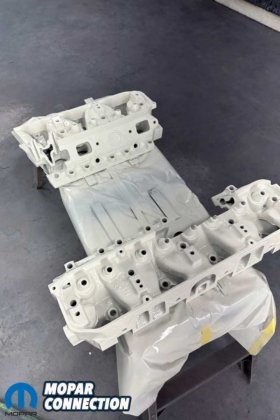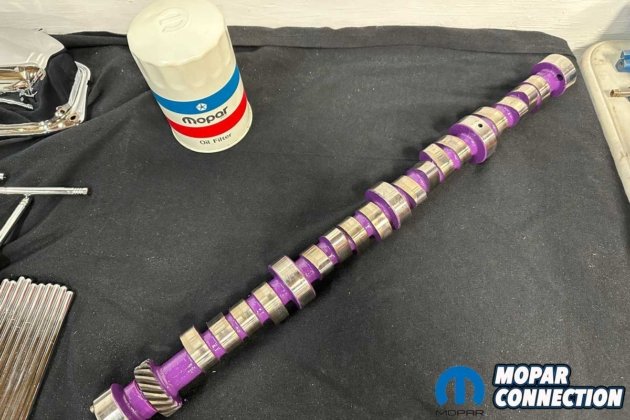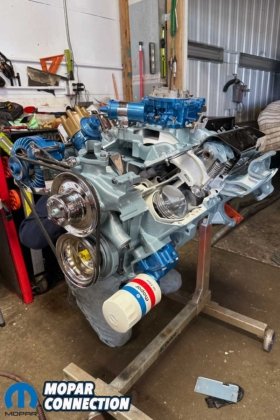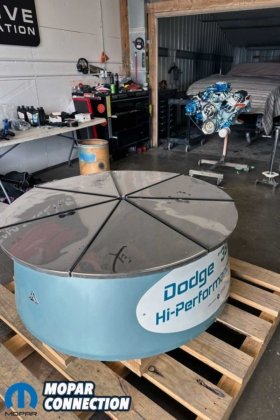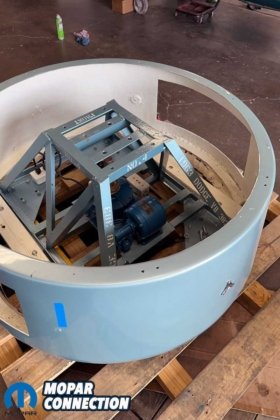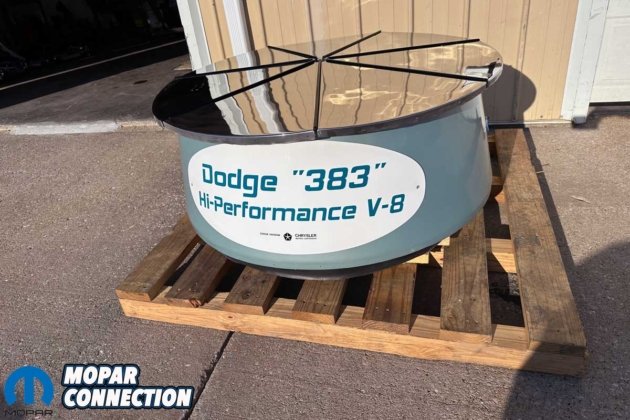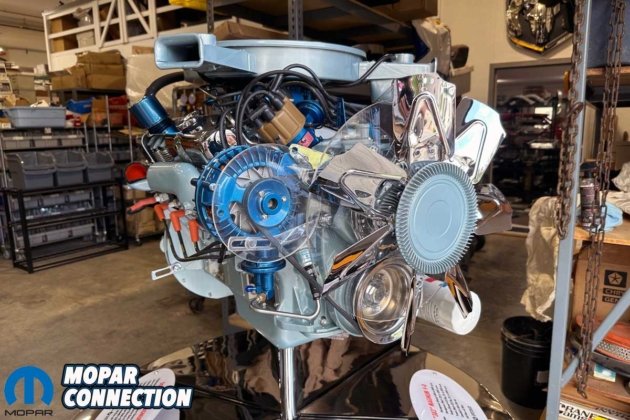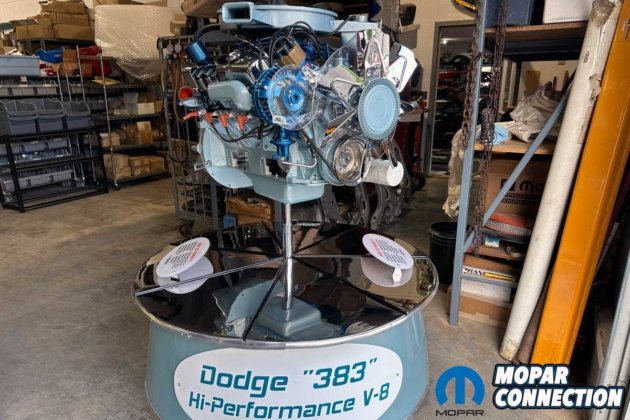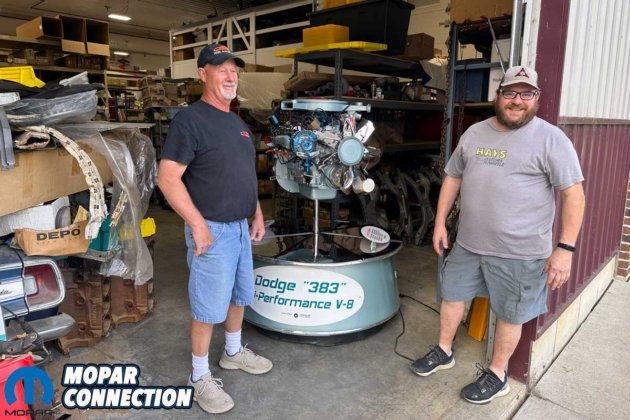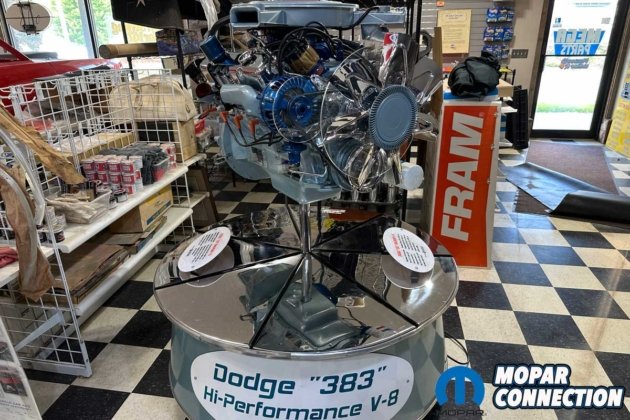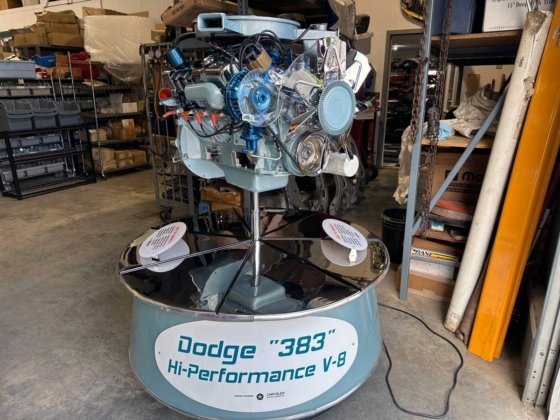
Cutaway engines have long been a fixture in the automotive world. From the earliest years of the auto industry, manufacturers recognized the value of opening an engine to the public eye. Pistons, valves, rods, and gears, ordinarily hidden from view, were set in motion to illustrate mechanical function with clarity. These displays served multiple purposes: they were instructional, promotional, and, in their own way, a form of industrial art.
Above Left: The cutaway was found in an eBay listing. The cutaway highlighted the internal details while maintaining a clean, finished appearance suitable for collectors and enthusiasts seeking a rare conversation piece. Above Right: The cutaway retains its authentic factory finish from the 1970 model year. The original paint not only reflects period-correct detailing but also adds to the historical value of the piece, preserving its connection to Chrysler’s engineering and design heritage.
In 1951, Chrysler Corporation introduced its Fire Power Hemi, a milestone in postwar American engine design. Dodge followed two years later with the Red Ram Hemi. To highlight the innovation of hemispherical combustion chambers, Dodge commissioned three animated cutaway versions of its newest engine.
Brightly painted and electrically motor-driven, they demonstrated the fundamentals of airflow, combustion, and power transfer. These cutaways traveled to auto shows, dealerships, and technical schools, proving both popular and effective.
Above Left: The display engine remains mounted on its original base, complete with factory electrical wiring and a vintage glass fuse, showcasing authentic period details rarely preserved today. Above Center: The inner support frame dates to 1963 and still carries the original stencil markings applied at the time of assembly, offering a direct link to the factory preparation of display bases. Above Right: Partially disassembled, the cutaway bears the stenciled marking “No. 4,” confirming it as the fourth display unit constructed, an important piece of documentation for collectors and historians.
It was a program that continued into the 1960s, and from it came one of the most unusual survivors of the era: the Dodge 383 High Performance cutaway engine.
By the early 1960s, Chrysler’s engineering and marketing departments were deeply engaged in the rising horsepower competition. New displays were required to present the latest technology, and in August 1962, Mechanical Displays of Ferndale, Michigan, produced a two-tone blue 383 cubic-inch V8 cutaway.
Above Left: Shown here in a disassembled state, the engine block exhibits clear evidence of flood exposure. Above Center: The factory crankshaft, though structurally intact, shows heavy surface rust from flood conditions. Above Right: The engine block, fully disassembled and mounted on a stand, reveals the extent of corrosion caused by prolonged exposure to moisture.
The base carried the stencil “1963 Dodge V8 383 No. 4,” suggesting that at least four such units were manufactured. To date, the only other confirmed example from this series is a 1963 Dodge 426 Wedge cutaway marked “Unit 1.”
The 383 unit made the rounds during the 1960s and is thought to have been included in Chrysler’s Rapid Transit System Caravan of 1970–71, a traveling exhibition of the corporation’s performance offerings. After that period, the trail went cold. Nearly half a century later, in the autumn of 2012, the cutaway reappeared in an unexpected venue: an eBay listing. Jamie Stephan of Mega Parts recognized its significance immediately and secured it through auction.
Above: Following hot tanking and bead-blasting, the engine block had been restored to bare metal, revealing crisp casting details and factory machining marks, presenting a fresh starting point for the restoration.
The engine arrived on two large pallets, complete but showing its age. Storage was the immediate solution, and the unit was set aside in Mega Parts’ warehouse until restoration could be planned. Unfortunately, circumstances intervened. In 2018, flooding caused by a levee break submerged the engine’s base and assemblies in muddy water for several days. The damage made restoration no longer optional but urgent.
Stephan turned to Keith at Noel Automotive, who accepted the considerable challenge. Examination revealed corrosion, compromised finishes, and electrical components beyond salvage. The project would require a complete rebuild.
Above Left: The block was refinished in durable white acrylic enamel, giving it a clean, exhibition-quality appearance while preserving the integrity of the casting. Above Right: Both the left and right cylinder heads had been coated in the same white acrylic enamel, providing a uniform finish that highlights their contours and machining details.
The mechanical restoration was entrusted to Scott at Sperry Engines, where the block, crankshaft, rods, and heads were hot-tanked, blasted, and re-machined as though preparing a functional powerplant. The crankshaft was turned and polished, new pistons installed, and the support mechanism for the rotating display redesigned to carry the heavy big block safely.
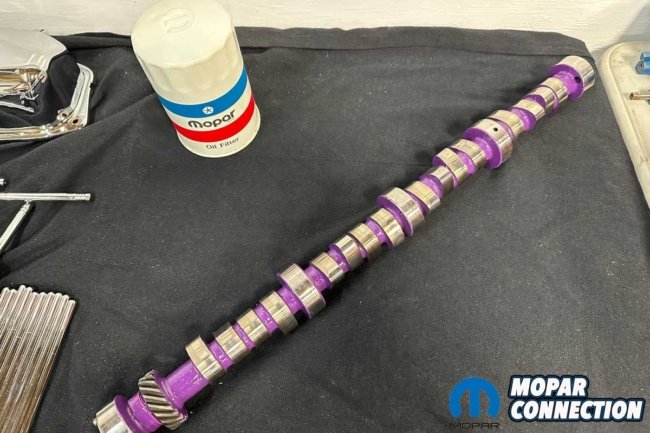
Above: The performance camshaft, known as the legendary Direct Connection “Purple Shaft,” had been freshly repainted to restore its iconic appearance, underscoring its historic place in Chrysler’s high-performance lineup.
Iowa City Electric Motors performed the electrical restoration, while chrome refinishing was completed at The Chrome Shop in Rock Island. The display base, delivered on a flatbed, required a full rewire and gearbox rebuild.
Above Left: The engine is in a partially assembled state with fresh paint applied, highlighting both the restoration progress and the precision of its components. Above Center: The display base is in the process of being reassembled, with structural elements restored and prepared for final detailing. Above Right: Inside the fully restored base, both electrical and mechanical systems have been renewed, preserving functionality while maintaining original design features.
Attention to the original presentation was equally important. Scott Marsh and the team at PIP Printing reproduced the plastic shields and placards. Keith at Noel Automotive carefully hand-painted the cutaway sections, highlighting cooling, exhaust, and intake passages in contrasting colors. A subtle but notable enhancement was the installation of a flashing LED in the No. 3 spark plug, providing a visual reference to ignition.
Above Left: The engine is fully assembled and finished with fresh paint, complemented by a polished stainless-steel top that adds a striking, exhibition-quality appearance. Above Right: Shown in its final form, the assembled engine features clear acrylic safety guards at the alternator and fan blades, balancing authenticity with protective display detailing.
Once the restoration was complete, transportation became the next concern. Due to the unit’s weight and complexity, disassembly was avoided. Instead, a dedicated jig and custom trailer were fabricated, with reinforced lifting points and tie-downs ensuring safe mobility.
The restored 383 made its public return at the Mopar Happening in Illinois. Despite a minor electrical issue en route, which was quickly repaired on-site, the engine operated as intended. Audiences once again witnessed pistons, valves, and combustion cycles in motion. Subsequent appearances included the Dubuque Mopar Show, after which the cutaway was placed on permanent display in the Mega Parts showroom.
Above Left: The engine, fully assembled and finished, is equipped with clear acrylic safety guards at the alternator and fan blades, shown here exactly as it was delivered. Above Right: The completed display engine is presented to its new owner, who sees it for only the second time, capturing the excitement and satisfaction of delivery day.
The Dodge 383 cutaway engine represents more than an unusual artifact; it reflects a time when automakers invested in technical demonstrations as both educational tools and promotional vehicles. From its creation in 1962, its disappearance, rediscovery, near-destruction in a flood, and eventual restoration, the 383 cutaway embodies the preservation of mechanical history.
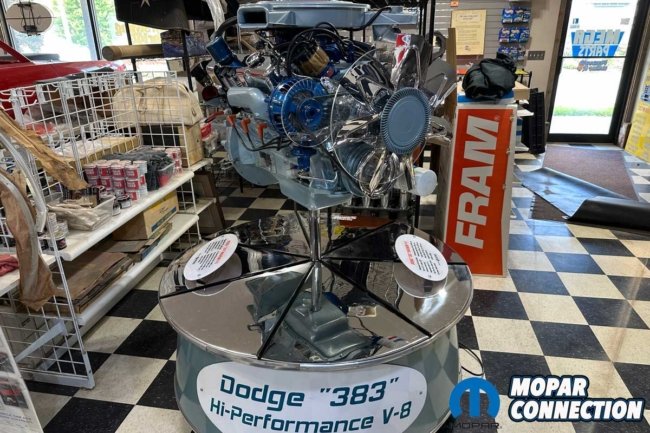
Above: The completed engine is showcased in the Mega Parts Showroom, highlighting its restored details and polished finish for enthusiasts and visitors to admire.
Today, thanks to the efforts of resolute individuals and skilled craftsmen, this rare Chrysler display piece has been returned to operational form, ensuring that a vital link to the corporation’s performance heritage endures.




